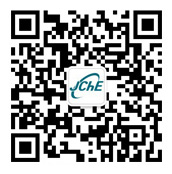| 1 Crowl, D.A., Louvar, J.F., Chemical Process Safety: Fundamentals with Applications, Prentice-Hall, New Jersey (2002). 2 Lyman, W.J., Reehl, W.F., Rosenblatt, D.H., Handbook of Chemical Property Estimation Methods, McGraw-Hill, New York (1982). 3 Suzuki, T., Ohtaguchi, K., Koide, K., “A method for estimating flash points of organic compounds from molecular structures”, Journal of Chemical Engineering of Japan, 24 (3), 258-261 (1991). 4 Tetteh, J., Suzuki, T., Metcalfe, E., Howells, S., “Quantitative structure-property relationships for the estimation of boiling point and flash point using a radial basis function neural network”, Journal of Chemical Information and Computer Sciences, 39 (3), 491-507 (1999). 5 Katritzky, A.R., Petrukhin, R., Jain, R., Karelson, M., “QSPR analysis of flash points”, Journal of Chemical Information and Computer Sciences, 41 (6), 1521-1530 (2001). 6 Albahri, T.A., “Flammability characteristics of pure hydrocarbons”, Chemical Engineering Science, 58 (16), 3629-3641 (2003). 7 Vazhev, V.V., Aldabergenov, M.K., Vazheva, N.V., “Estimation of flash points and molecular masses of alkanes from their IR spectra”, Petroleum Chemistry, 46 (2), 136-139 (2006). 8 Liaw, H.J., Chiu, Y.Y., “The prediction of the flash point for binary aqueous-organic solutions”, Journal of Hazardous Materials, 101 (2), 83-106 (2003). 9 Liaw, H.J., Chiu, Y.Y., “A general model for predicting the flash point of miscible mixtures”, Journal of Hazardous Materials, 137 (1), 38-46 (2006). 10 Pan, Y., Jiang, J., Wang, Z., “Quantitative structure-property relationship studies for predicting flash points of alkanes using group bond contribution method with back-propagation neural network”, Journal of Hazardous Materials, 147 (1-2), 424-430 (2007). 11 Kier, L.B., Hall, L.H., Molecular Connectivity in Chemistry and Drug Research, Academic Press, New York (1976). 12 Kier, L.B., Hall, L.H., Molecular Connectivity in Structure-Activity Analysis, Research Studies Press, Letch worth, U.K. (1986). 13 Lucic, B., Lukovits, I., Nikolic, S., Trinajstic, N., “Distance-related indexes in the quantitative structure-properties relationship modeling”, Journal of Chemical Information and Computer Sciences, 41 (3), 527-535 (2001). 14 Randic, M., “The connectivity index 25 years after”, Journal of Molecular Graphics and Modelling, 20 (1), 19-35 (2001). 15 Randic, M., Pompe, M., “The variable molecular descriptors based on distance related matrices”, Journal of Chemical Information and Computer Sciences, 41 (3), 575-581 (2001). 16 Pogliani, L. “From molecular connectivity indices to semi empirical connectivity terms: Recent trends in graph theoretical descriptors”, Chemical Reviews, 100 (10), 3827-3858 (2000). 17 Zhong, C., Yang, C., “Approach for the calculation of high-order connectivity indices of polymers and its application”, Journal of Polymer Science Polymer Physics, 40 (5), 401-407 (2002). 18 Devillers, J., Balaban, A.T., Topological Indices and Related Descriptors in QSAR/QSPR, Gordon and Breach, Amsterdam (1999). 19 Bonchev, D., Rouvray, D., Chemical Topology: Applications and Techniques, Taylor & Francis, London (2000). 20 Pogliani, L., “Implementing molecular connectivity theory, a basic tool in modeling drugs”, Journal of Pharmaceutical Sciences, 96 (8), 1856-1871 (2007). 21 Kier, L.B., “Use of molecular negentropy to encode structure governing biological activity”, Journal of Pharmaceutical Sciences, 69 (7), 807-810 (1980). 22 Yang, C., Zhong, C., “Modified connectivity indices and their application to QSPR study”, Journal of Chemical Information and Computer Sciences, 43 (6), 1998-2004 (2003). 23 Pogliani, L., “The hydrogen perturbation in molecular connectivity indices”, Journal of Computational Chemistry, 27 (7), 868-862 (2006). |
